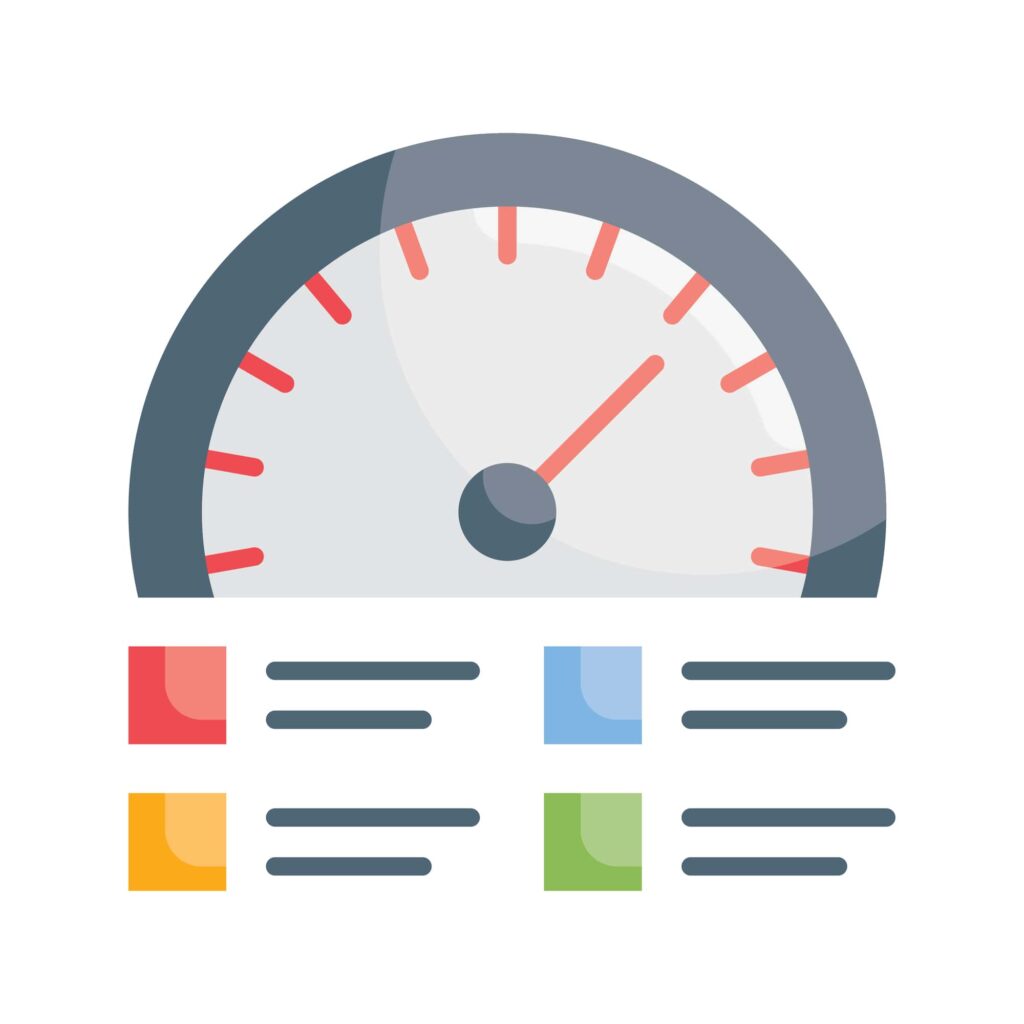A Guide to Google’s PageSpeed Insights in 2024

In an era where users demand instant gratification, the importance of page speed cannot be overstated. Search engines results prioritize fast-loading websites, making speed one of the best ways to improve a site’s SEO. In addition, a seamless user experience increases engagement and reduces bounce rates, which has a positive impact on conversions.
Google’s PageSpeed Insights is a web performance tool that assesses the speed and usability of a website on both mobile and desktop devices. It provides actionable insights and recommendations to optimize web pages for faster loading times.
This guide serves to provide a comprehensive overview of PageSpeed Insights and its significance in the current digital ecosystem.
Understanding PageSpeed Insights Metrics
To effectively use PageSpeed Insights, it’s essential to understand the metrics it evaluates.
Core Web Vitals
- Largest Contentful Paint (LCP): measures the time it takes for the largest content element on a page to become visible. Optimizing LCP involves strategic approaches such as efficient resource loading and prioritizing above-the-fold content.
- First Input Delay (FID): measures the time it takes for a user to have the ability to interact with the page. Reducing FID requires optimizing JavaScript execution time and prioritizing critical scripts.
- Cumulative Layout Shift (CLS): gauges the visual stability of a page by evaluating unexpected layout shifts. Managing CLS involves careful management of element dimensions and loading of styles.
Other Key Metrics
- Time to First Byte (TTFB): measures the time it takes for a browser to receive the first byte of data from the server. Evaluating server response times and utilizing Content Delivery Networks (CDNs) are crucial for optimizing TTFB.
- Total Blocking Time (TBT): the total time a page is unresponsive to user input. Minimizing TBT involves strategies like prioritizing critical rendering paths and reducing third-party scripts.
- Speed Index: calculates how quickly content is visually displayed during page load. Techniques such as image compression and minification contribute to a lower speed index.
How to Use PageSpeed Insights
Accessing PageSpeed Insights is a straightforward process, and understanding how to use the online tool is crucial for effective performance optimization.
Upon entering a website URL, PageSpeed Insights then provides a detailed report divided into mobile and desktop sections. Each section may rank differently depending on how well you’ve optimized your site for each format.
PageSpeed Insights also generates a numbered score for each assessed metric along with specific recommendations for improvement. These recommendations serve as a guide for developers as they make changes to further optimize the site for speed.
Diving deeper into Core Web Vitals allows for a more nuanced approach to performance optimization, focusing on specific aspects that significantly impact user experience.
Largest Contentful Paint (LCP)
Reducing image sizes through compression and utilizing next-gen image formats are effective strategies for optimizing LCP.
Lazy loading is another technique that can be useful – this refers to the practice of delaying the loading of an image until it comes into the viewport. It is especially useful for websites with a lot of images.
First Input Delay (FID)
Identifying and minimizing long-running JavaScript tasks is crucial for reducing FID. Developers also employ code splitting techniques and optimize event handlers to improve responsiveness.
In addition, prioritizing the loading of essential scripts over non-essential ones ensures a quicker FID. Asynchronous loading and utilizing modern JavaScript features enhance the efficiency of script execution.
Cumulative Layout Shift (CLS)
Ensuring consistent dimensions for elements on a webpage prevents unexpected layout shifts. Allocating dynamic space for ads and other loaded content helps in managing CLS effectively.
Mobile Optimization Tips
Given the prevalence of mobile browsing in 2024, optimizing for mobile devices is a critical component of a comprehensive page speed strategy. Prioritizing mobile optimization during the development phase leads to more efficient and faster-loading websites.
Maintaining consistency in content and functionality across desktop and mobile versions of a website is crucial. Testing and optimizing for various devices contribute to a seamless cross-device experience.
Server-Side Optimization
Optimizing server-side elements is a fundamental aspect of improving page speed, encompassing hosting choices, server response times, and the integration of Content Delivery Networks (CDNs). Integrating a CDN ensures efficient content delivery by distributing assets across geographically dispersed servers. This reduces latency and accelerates the loading of web pages for users worldwide.
It is essential to select a hosting provider with low server response times. Server response times directly impact the overall speed and responsiveness of a website.
Setting Up Automated Monitoring
Page speed optimization is an ongoing process, and setting up automated monitoring systems helps ensure sustained performance. Establish performance budgets to track and control various performance metrics. Automated alerts for exceeding predefined thresholds allows for prompt attention from your team and the development of corrective fixes. Regular audits of web performance ensure that the implemented optimizations continue to deliver results.
Final Thoughts
Google’s PageSpeed Insights remains a vital tool for webmasters, developers, and businesses striving for optimal website performance in 2024. By understanding and implementing these strategies, one can navigate the dynamic landscape of web optimization, ensuring not only optimization for search engines, but also delivering an exceptional user experience. As the digital realm continues to evolve, the emphasis on page speed as a crucial performance metric will continue, making continuous monitoring and strategic improvements indispensable for online success.
Get a New Business Website Optimized for Speed and User Experience with Pink Dog Digital
If your website hasn’t been optimized for Google’s PageSpeed Insights, it could have a seriously negative impact on your website’s search engine performance. This, in turn, could mean you’re losing potential clients or customers. Pink Dog Digital can help! At Pink Dog Digital, we have the tools and experience needed to improve the user experience on your business website and help it score well on Google PageSpeed Insights. We also offer a wealth of other services tailored to your business’s digital goals.
Some of these services include:
- New website design & programming
- Search engine optimization
- Digital advertising
- Content creation
- Social media management
Contact us at 410-696-3305 or email us at pinkdogdigital@gmail.com for any inquiries or to book a service. You can also fill out our online Contact Us form or visit our website to learn more about us.

